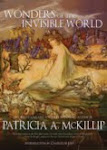Stanley Glacier is located in Kootenay National Park in British Columbia.
This trail is classified as being moderate, consisting of 9 km (5.6 miles) roundtrip. This is a relatively short and moderately steep hike of a half-day taking the hiker up to a hanging valley with a glacier behind it.
Elevation gain: 395m (1296 ft).
The trail head is on Hwy 93, 3.2 km west of the Banff and Kootenay National Parks borders at a parking area on the east side of the highway.

[1- please click to enlarge]

[2 - please click to enlarge]
When walking through an old burn it is advisable to pay attention to the direction of the wind and its speed. The dead trees pose a hazard to the unwary hiker: by falling down or branches snapping off.

[3 - please click to enlarge]

[4 - please click to enlarge]

[5 - Indian paintbrush - please click to enlarge]

[6 - please click to enlarge]

[7 - Hawk on trail - click to enlarge]

[8 -
Pika - please click to enlarge]
These little critters are also known as 'rock rabbits', resembling chinchillas. They have a sharp whistle when danger approaches their nesting area, often tucked between rocks, and in meadows will burrow into the ground to produce their young.

[9 - please click to enlarge]
At 1 km up the trail Stanley Creek drains into a waterfall.

[10 - please click to enlarge]
At the 2 km mark, the hiker crosses over Stanley Creek on a log bridge which is the first opportunity to see the Stanley Glacier.

[11 - Stanley Creek - please click to enlarge]

[12 - Stanley Creek drainage - click to enlarge]
From here the creek is mainly underground. Continue along the east side of the trail bed to the tree line.

[13 - Wolf in meadow - please click to enlarge]
The photographer took a chance in taking this photo, as this wolf with its head lowered is feeling threatened.

[14 - please click to enlarge]

[15 - please click to enlarge]

[16 - Stanley Glacier waterfall over wall - please click to enlarge]

[17 - Stanley Glacier and waterfall - please click to enlarge]

[18 - Another view of the Stanley Creek drainage - please click to enlarge]

[19 - Head of the Valley - please click to enlarge]

[20 - Looking back]

[21 - Stanley Glacier - please click to enlarge]
Mount Stanley [3,090m (10,138ft.)] was named in 1927 by J. Monroe Thorington after Henry Morton Stanley. Henry Stanley’s most famous expedition was to Africa where he searched for and found David Livingstone near Lake Tanganika where he had been recovering from an illness contracted during his quest to find the source of the Nile River. Lord Stanley’s name is best known as the hockey prize, the Stanley Cup.
At the 4.2km mark follow the trail up the stone stairs crossing the talus scree slope.

[22 - please click to enlarge. Note on right side of photo the trail winds over the scree. Here the hiker has to watch out for possible falling rocks.]

[23 - Scree needs care in crossing - please click to enlarge]

[24 - Looking back down Stanley Glacier valley - please click to enlarge]

[25 - Stanley Glacier - please click to enlarge]

[26 - What remains of Stanley Glacier - please click to enlarge]
At 4.5km the trail ends at the marker.

[27 - please click to enlarge]
On the other side of Mount Stanley is Mount Ball which was posted in a previous hike
here.

[28 - Looking down the Stanley Glacier valley with Mount Whymper in background - please click to enlarge]
Mount Whymper is 2845m (9334ft.) tall and is located in the upper Vermilion River Valley between Tokumm River and Chickadee Valley. It was named in 1901 after Edmund Whymper, made famous following his ascent of the Matterhorn in the Alps.

[29 - Another view of the Stanley Glacier valley - please click to enlarge]

[30 - Hiking out from Stanley Glacier - please click to enlarge]
Before venturing out on any trail in Kootenay National Park it is best to check the
trail conditions first. The current conditions for Stanley Glacier are: “Snowbound and icy. Be very careful. Slippery sections! Avalanche danger.”
Also check for a
Bear Update as in early May they have just crawled out of their winter dens and are HUNGRY.
Research:
ParksCanadaPeakfinder.comPhoto Credits: [1][29]-openq CC=nc-flickr, [2]-anastaz1a CC=nc-sa-flickr, [3][4][6][7][8][9][10][13][23][24][25][27]-jtbradford CC=nc-flickr, [5][11][19][20][26]-A tea but no e CC=flickr, [12][17][18]-Steve Corbato CC=nc-sa-flickr,[14][15][16][21][22][28][30]-brilang CC=nc-sa-flickr.




















































